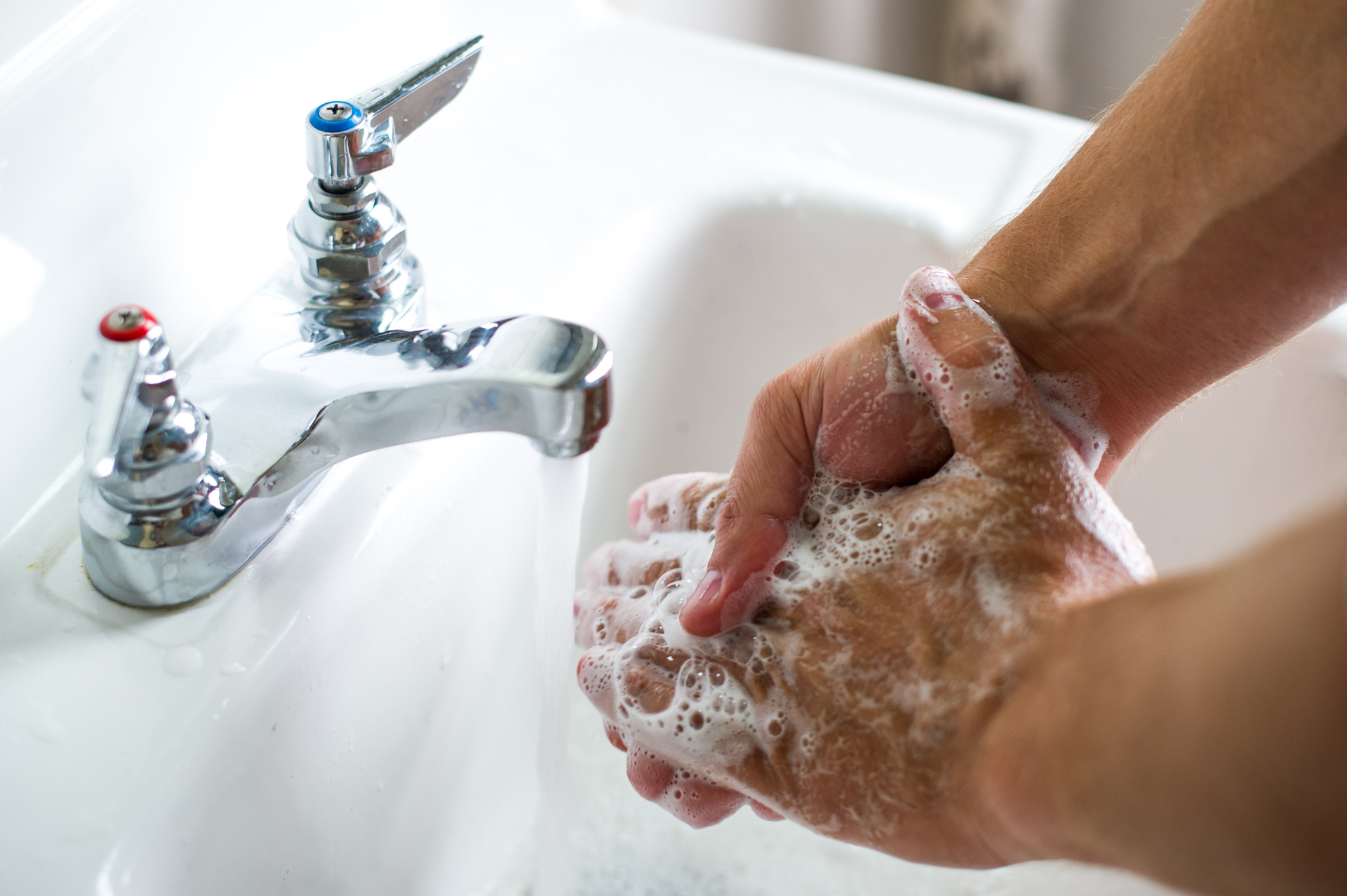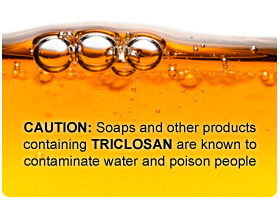Why You Should Avoid Soaps Labeled “Anti-Bacterial”

Triclosan, one of the most prevalent antibacterial compounds found in products, is the focus of a campaign undertaken by a coalition of health and environmental groups led by Beyond Pesticides and Food & Water Watch, aimed at removing triclosan from the market. The antimicrobial agent can be fond in many health and beauty products, and has been found as a known endocrine disruptor. Triclosan was first used in the medical industry as a surgical scrub, but was soon added to consumer products like antibacterial soaps, detergents, deodorants, toothpastes and cosmetics.
The chemical is used to kill bacteria and fungus and to eliminate odors. However, triclosan has also been found to cause endocrine disruption, impacting the thyroid by decreasing hormones, as well as building up in fatty tissues inside the body. In severe cases it has caused organ system toxicity, and in mild cases irritation and allergies. Triclosan is especially worrisome for pregnant women and breast feeding mothers.
2014 Avon, one of the world’s largest beauty product manufacturers, to remove the antibacterial chemical triclosan from its products is “the latest example of how consumer pressure can improve product safety and change the marketplace.”
“This is proof that consumer pressure does work and influences companies to do the right thing,” EWG’s Executive Director Heather White said. “We applaud Avon for putting the concerns of consumers first, and we hope other makers of beauty products will follow its example.”
Triclosan is an antimicrobial chemical most commonly used in hand soaps and body washes to inhibit bacterial growth. It is also found in some brands of toothpaste, clothing, kitchenware, furniture and toys.
Triclosan is absorbed through the skin and has been detected in human breast milk, blood and urine samples. In laboratory studies, it has been linked to hormone disruption. The chemical is also persistent in the environment and toxic to aquatic life.
According to the Food and Drug Administration, there is no evidence that triclosan in antibacterial soaps provide any benefit over washing with regular soap and water, yet many companies continue to add it to their consumer products. The FDA announced a new proposed rule in December of 2013 that would require manufacturers to provide more data about the effectiveness of antibacterial soaps.
Products Containing Triclosan
 DISCLAIMER: Due to public pressure, many major manufacturers have quietly begun reformulating their products without triclosan. Product formulations may change without notice. Below is a small sampling of products formulated with, or used to be formulated with triclosan and is not to be considered a comprehensive list. Remember to always refer to product labels to determine whether triclosan is contained in your product. Some retail outlets may still carry older formulations. Look out for labels that state: “antimicrobial protection.” Some antibacterial soaps may use triclosan’s cousin, triclocarban, in place of triclosan.
DISCLAIMER: Due to public pressure, many major manufacturers have quietly begun reformulating their products without triclosan. Product formulations may change without notice. Below is a small sampling of products formulated with, or used to be formulated with triclosan and is not to be considered a comprehensive list. Remember to always refer to product labels to determine whether triclosan is contained in your product. Some retail outlets may still carry older formulations. Look out for labels that state: “antimicrobial protection.” Some antibacterial soaps may use triclosan’s cousin, triclocarban, in place of triclosan.
“Unfortunately, the FDA has been slow to act on triclosan, forcing consumers to advocate for themselves,” EWG’s White said. In the meantime, consumers can refer to EWG’s Guide to Triclosan to help reduce their exposure to the substance. One important tip is to avoid hand soaps and body washes labeled “antimicrobial” or “antibacterial.”
Consumers can also use EWG’s Skin Deep Cosmetics Database and App to find out which products contain triclosan or other potentially hazardous chemicals.





